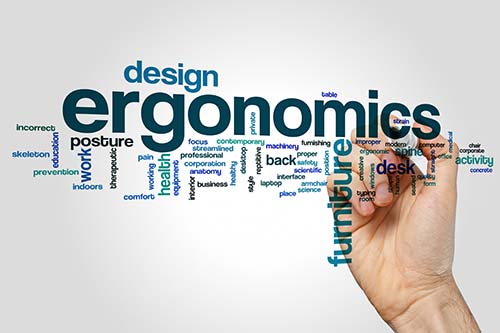
When fostering a positive workplace culture, employee comfort often takes center stage. Ergonomic furniture, designed to support human function and movement, goes hand in hand with employee well-being. From enhancing productivity to gaining long-term cost savings, find out why it’s necessary for offices to have ergonomic furniture and consider making the switch for your employees.
Enhances Productivity
Ergonomic furniture is not just about comfort; it’s about creating an environment where employees can work at optimal levels. Desks and chairs that adjust to the users’ preferences reduce the strain and fatigue associated with long hours of sitting, thereby enhancing focus and efficiency. When employees feel physically supported, their concentration and productivity naturally improve.
Improves Employee Well-Being
Beyond the immediate benefits of comfort and support, ergonomic furniture significantly contributes to the overall well-being of employees. By reducing the risk of musculoskeletal disorders and the discomfort associated with poor posture, ergonomic setups help cultivate a healthier workplace. Employees who feel cared for are more likely to report higher job satisfaction and lower stress levels.
Adapts to Individual Needs
The beauty of ergonomic furniture lies in its adaptability, accommodating various body types, work habits, and personal preferences. This customization ensures that every employee can adjust their workspace to suit their unique needs, promoting a sense of personal well-being and comfort.
Promotes Better Posture
Ergonomic chairs and desks encourage proper alignment of the spine, neck, and hips, guiding employees toward better posture throughout the day. This not only reduces the risk of developing chronic pain but also enhances breathing and circulation. A properly aligned body is more relaxed yet alert, making it easier to maintain productivity over longer periods.
Contributes to Long-Term Cost Savings
Investing in ergonomic office furniture might be a notable upfront cost, but the long-term savings are substantial. Selecting ergonomic office furniture aids in reducing health-related absences and the costs associated with medical claims from workplace injuries. This proactive approach means businesses can save significantly on indirect costs, such as lost productivity and employee turnover.
Utilizing ergonomic furniture in an office setting isn’t just about providing a comfortable chair or a desk that sits at the right height; it’s about recognizing and addressing the physical demands of office work. That is why it’s necessary for offices to have ergonomic furniture.

